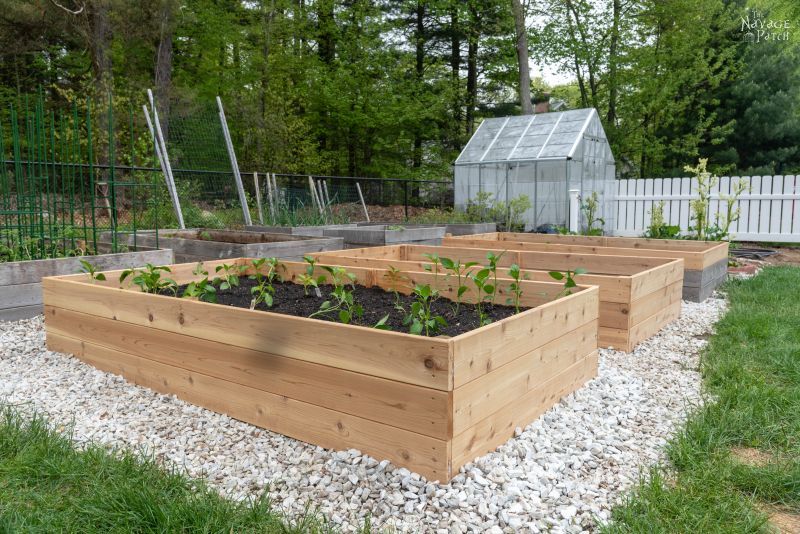Raised Garden Beds
If you're looking for an affordable way to create a raised garden bed, consider using recycled materials such as old pallets or repurposed wood. Another option is to use cinder blocks, which are both affordable and provide a sturdy structure for your raised bed. To promote better drainage and prevent weed growth, consider adding a layer of landscape fabric at the bottom of your raised bed. This will help create a healthy and fertile environment for your plants to thrive.
Once you've decided on the material for your raised garden bed, it's time to start building. Begin by measuring and marking the desired dimensions of your bed. Ensure that it's wide enough for proper plant spacing and easy maintenance. Next, clear the area of any debris or vegetation, and level the ground as much as possible. This will provide a solid foundation for your raised bed and prevent any unevenness or instability.
You can choose to edge your raised beds using any materials you have at hand, such as wood, stones, bricks, or cement blocks. Adding an edge to your raised bed not only enhances its appearance but also helps contain the soil and prevent erosion. If you're using wood, make sure to use rot-resistant varieties such as cedar or redwood. Stones can be stacked to create a rustic and natural-looking border, while bricks provide a more structured and formal appearance. Cement blocks offer durability and stability, ensuring your raised bed stays intact for years to come. Whichever material you choose, make sure it's securely in place before filling your bed with soil. This will help prevent any shifting or movement of the border as the soil settles.
Web. https://www.thenavagepatch.com/wp-content/uploads/2018/05/DIY-Raised-Garden-Beds-F003.jpg.
When filling your raised bed with soil, it's essential to use a high-quality soil mix that's rich in organic matter and well-draining. This will provide the best-growing conditions for your plants and ensure they receive the nutrients they need to thrive. When researching the ideal soil composition for your chosen plants, consider their specific needs. Some plants prefer loamy soil, while others thrive in a more sandy or clay-like texture.
Incorporating compost or other organic matter into the soil mix will improve its fertility and water retention capabilities. This will create a healthy and nutrient-rich environment for your plants to flourish. In addition to soil composition, consider the sunlight requirements of your plants. Some plants prefer full sun, while others prefer partial or full shade. Understanding the specific sunlight needs of your chosen plants will ensure they receive the optimal amount of light for photosynthesis and growth.
Proper watering is crucial for the health and vitality of your plants. Different plants have different water requirements, so it's important to research and understand the watering needs of each plant in your garden. Overwatering or underwatering can lead to root rot or dehydration, respectively, which can stunt growth or even kill your plants. It's also important to consider the soil quality and drainage of your garden. Poorly draining soil can lead to waterlogged roots, while overly sandy soil may not retain enough water for the plants.
Raised Bed Gardening Ideas That You Can Use
How To Use Sub-Irrigated Planters In The Garden
Patio Gardening Ideas For You
Gardening Tips And Tricks For Beginners
Gardening Tips For Winter That You Can Use
Links:

No comments:
Post a Comment